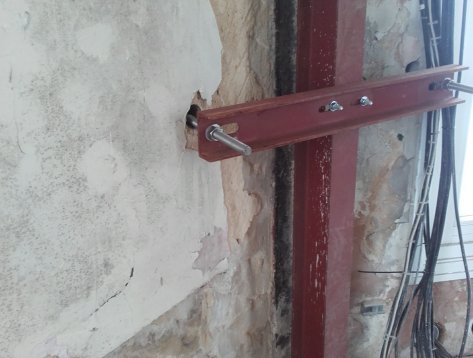Maintaing our heritage structures for future generations
The original Semaphore tower was built in 1833 and was erected on the roof of the Rigging House and Sail Loft buildings in Portsmouth as the terminal station of the London – Portsmouth Semaphore Line. However, this tower was destroyed in a fire in 1913 and the tower we see today was opened in 1930. It is built of stone as a replica of the original, incorporating the old Lion Gate (1778) from the Portsea fortification.
In 2016 Atkins were commissioned to carry out an intrusive investigation of the steel framed building. It was found that the building, and in particular the tower, had extensive cracks and water ingress. This was caused by corrosion of the embedded steel sections (Regent’s Street Disease). The corrosion build-up had started to push on the external column facade panels and there was a possibility that these panels would fall off. In order to hold the panels in position whilst a repair solution could be agreed, circular stainless steel bars were fixed around the columns and held in place internally by fixing to an intricate arrangement of structural steel sections.
In 2017 CRL were awarded the contract to carry out the installation of an impressed current cathodic protection system to the tower, along with substantial brick and Portland Stone repairs. The system proposed needed to provide a 30 year period of negligible corrosion activity to the steel frame members in certain parts of Semaphore Tower.
The works carried out by CRL included the following:
-
-
- Supply, install and grout 570 anodes,
- Supply and install 334m of 2mm titanium cabling,
- Supply and install 20nr Junction boxes,
- Supply and install a main control unit (including monitoring software),
- Supply, install and grout 12nr reference cells,
- Supply, install and grout 12nr decay probes,
- Grout up between the steel column sections and the inner skin of the column facade panels, and
- Repairs and restoration of the stonework.
-

"All works carried out were meticulously monitored using a rigorous Quality & Inspection Test Plan. This helped ensure that the works were carried out 'right first time'.
Tony Parsons | Senior Site Manager | CRL
























